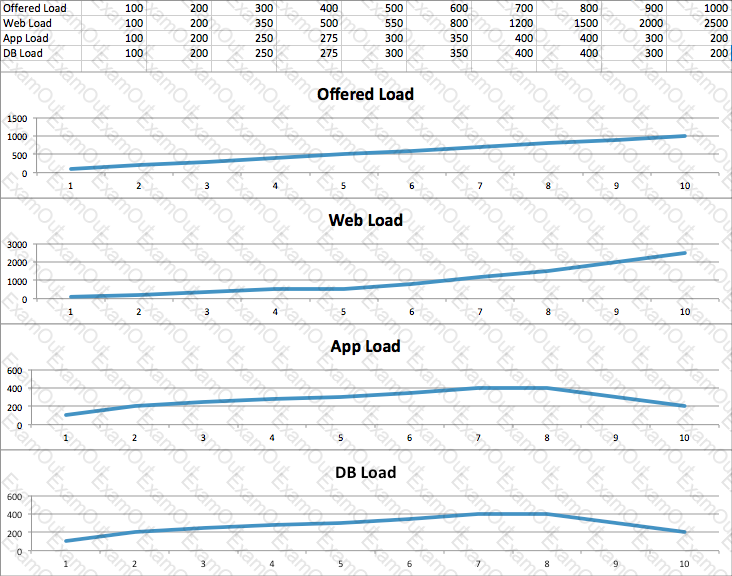JIDA automatically collects metrics from predefined categories of classes except:
What issues arise in instrumenting a Java application using IBM SDK Java when the command line to start the application is not readily accessible? (Select 2)
When investigating reports of web page performance problems, which of these integration pathways could be used? (Select 3)
Refer to the exhibit.

This graph represents the number of requests waiting for a response across various tiers. With load being generated at a constantly increasing rate, which tier is the bottleneck and why?
After downloading Web Transaction Analysis page view packets from AppResponse Xpert and opening AppTransaction Xpert, you are prompted to enter Transaction Trace Warehouse information. Why did the prompt appear and what does it mean?
Refer to the exhibit.

In the diagram, what does the WIN<<7=17408 (in the red rectangle) indicate?
In a three-tier application with a web front-end, application middle tier, and database back-end, where is the best instrumentation point for end-to-end visibility?
For a seamless workflow that spans monitoring, alerts, triage, and diagnosis of root causes, the best overall solution is:
Which of the following applies when comparing AppInternals Xpert metric data with AppResponse Xpert data for the last 10 minutes?
How can dashboards be shared? (Select 2)

